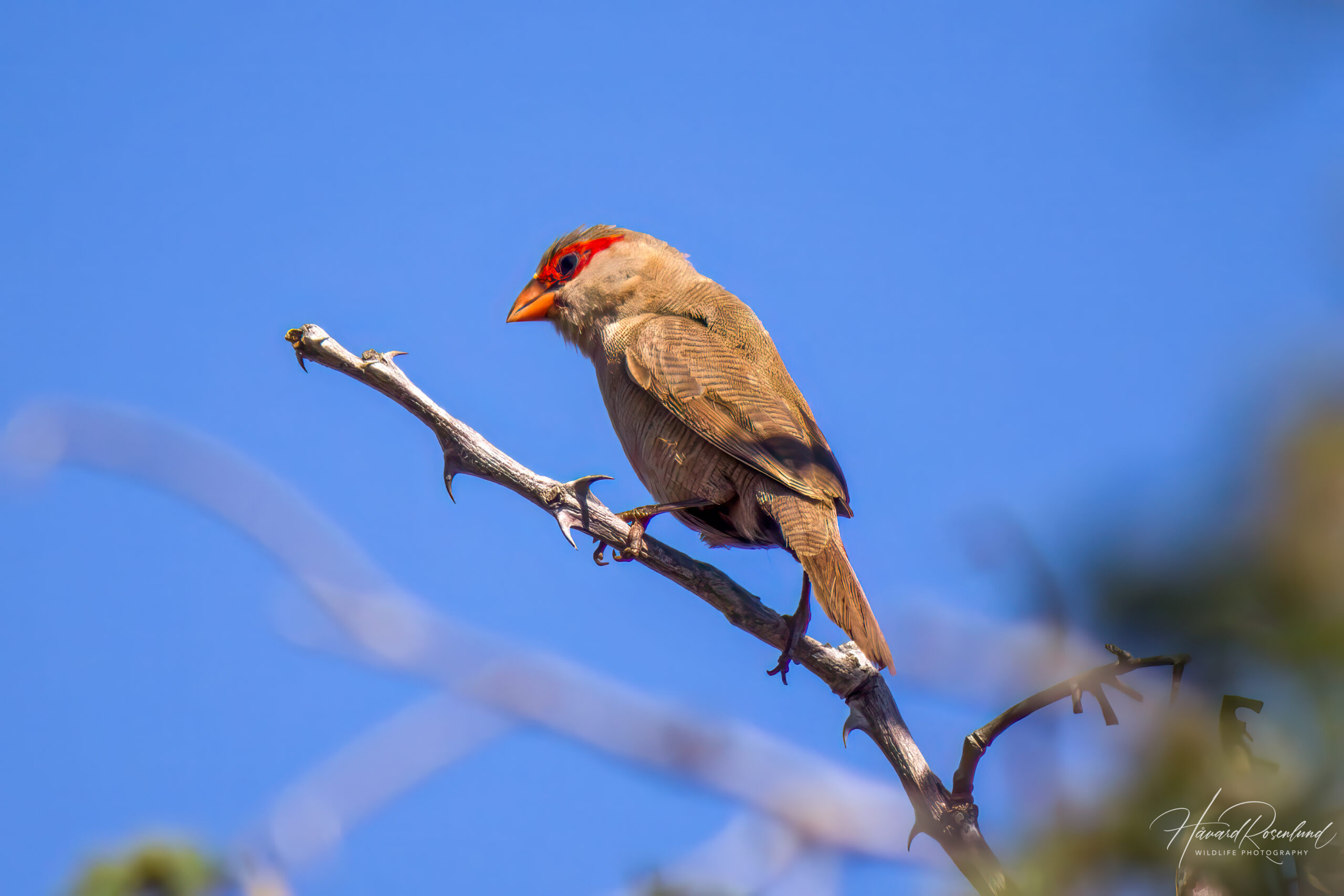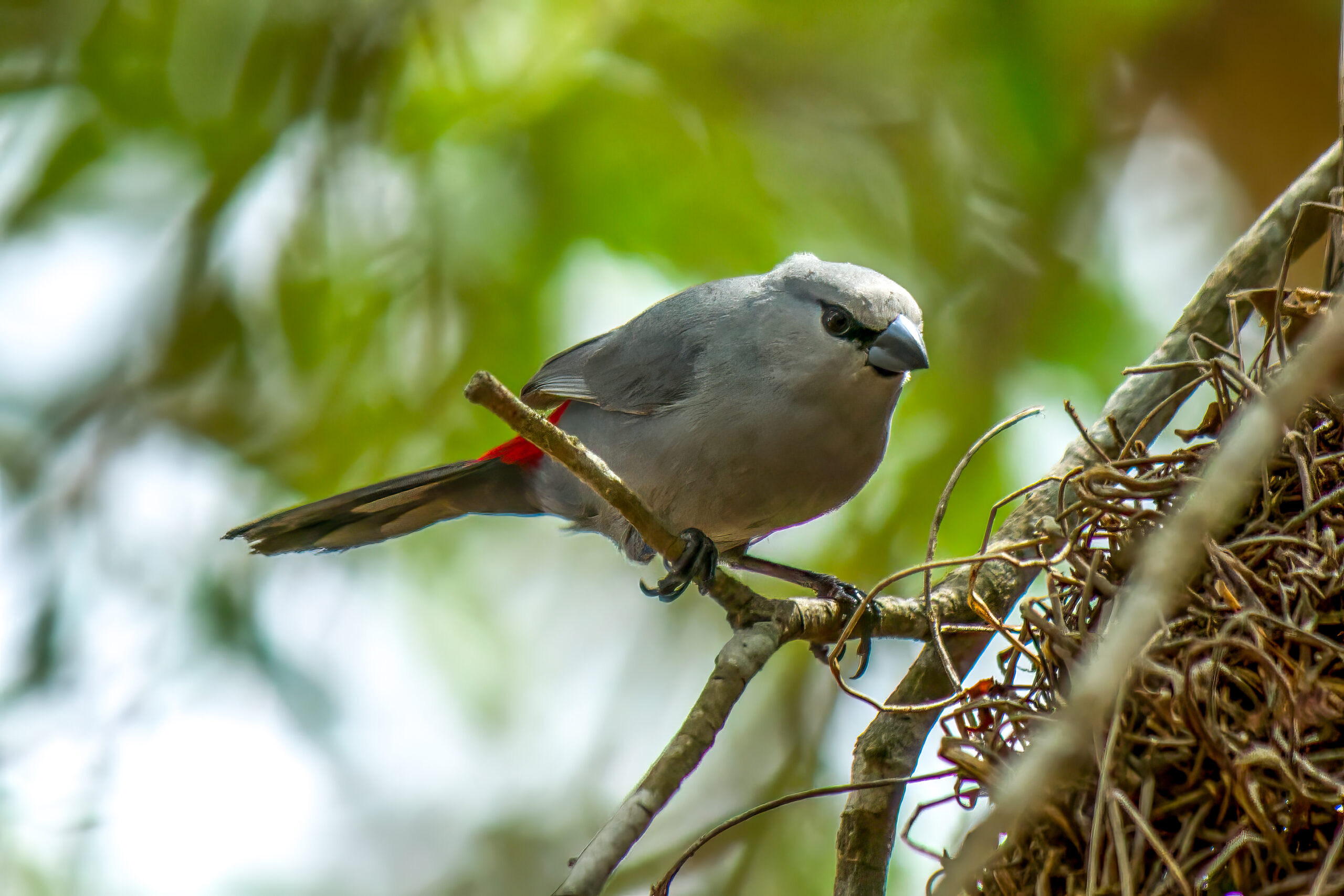Description
The common waxbill (Estrilda astrild), also known as St. Helena waxbill, is a widespread and common species of estrildid finch in sub-Saharan Africa. It grows to an average length of 11-13 cm (4-5 in). The name waxbill comes from the bright red bill of this species. The color of the bill resembles the color of sealing wax previously used to seal letters in the old days. Not all waxbills have red bills however, but the common waxbill was among the first to be recognized and the name waxbill became the norm when naming related species. The common waxbill has, apart from its red bill, an all grey to grey-brown plumage with fine dark brown barring. It has a bright red line across the eye. Throat and cheek are lighter. It can have a pinkish tint to the underparts and a red line on the belly, depending on the subspecies. Females are duller with less red on the underparts. Juveniles are also dull, have faint barring and have a black bill.
Diet & habitat
The common waxbill prefers open habitats with rank vegetation, such as grasslands, marshes, and savannah with tall grass. In moist areas it can be found amongst reeds. It also frequents farmlands, gardens, and parks. It is a very social bird, and it does most of its foraging in large flocks of 30 or more birds, sometimes numbering hundreds and thousands. It feeds mainly on grass seeds, flowers, and fruit, but does also supplement its diet with small insects and other invertebrates, especially in the breeding season.
Nesting
The male does most of the nest-building. The nest is shaped into a pear-shaped ball with an entrance tunnel on one side. It is generally built amongst dense vegetation close to the ground. The female lines the insides with fine grass and feathers. Sometimes they build another structure on top of the main nest, where the male sometimes rests. It might also confuse predators. 3-9 eggs, usually 4-6, are laid by the female and incubated by both sexes for 11-13 days. After hatching the chicks stay in the nest for 17-21 days while being fed by both parents. They will come back to roosts for another few days after leaving the nest.
Status
The common waxbill is very common and widespread in its distribution. It is additionally introduced in many countries worldwide. They have been introduced to many of the African islands, St Helena being one, which is why it is also called St Helena waxbill. It is now widespread in Portugal and parts of Spain, and many of the Mediterranean islands. In the Americas it is found in Trinidad and on the Bermuda Islands as well is several parts of Brazil. It has also been introduced to many of the Pacific islands, such as Vanuatu, Tahiti, and the Hawaiian Islands. It is not threatened and is listed as least concern on the IUCN Red List.






